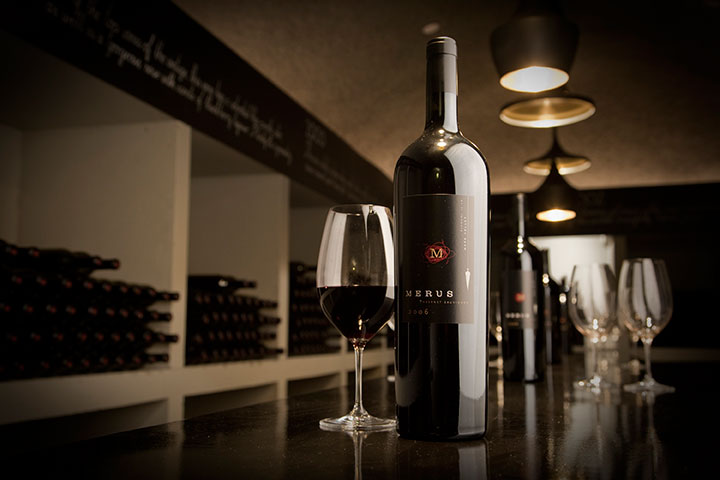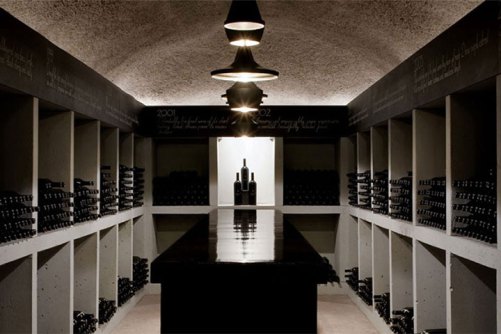To bring out all that a wine has to offer careful handling and decanting is recommended.
Some vintages of Merus are best enjoyed after decanting and for fine wines proper cellaring is always essential.
Decanting Young Wines
One type of bottling that benefits from decanting is a young wine that is concentrated and richly textured, with tannins that have not yet fully attained the suppleness a few years of age will bring. Some vintages of Merus Cabernet Sauvignon fit this profile.
These wines can best be enjoyed on release if they are decanted. The process of pouring from bottle to decanter—and even from the first decanter to a second one—lets the wine breathe, the flavors unfold, and the tannins soften. Here’s how to decant a young wine:
After opening the bottle, pour the wine into the center of the decanter. Even better, use an aerating funnel. The bit of foam the wine momentarily throws up tells you that it is taking on oxygen. To double decant, repeat the process, pouring from the first decanter into a second. This further increases aeration.
Allow the wine to sit in the decanter for half an hour. Taste a small splash. If the wine’s aromas and flavors have not fully unfurled, allow it to sit and breathe a while longer, then taste again. You will notice a dramatic difference in aroma and taste as the wine opens up.
Decanting Older Wines
With older wines, at least those with aging potential, decanting may also be called for, in order to show the wine to best advantage.
Wines that have been in bottle for many years can develop sediment. While it doesn’t indicate anything wrong with the wine, sediment is unpleasant in the glass, and decanting separates clear wine at the top of the bottle from the sediment at the bottom.
In addition, aged wines sometimes exhibit slightly off odors when first opened, a phenomenon indelicately referred to as “bottle stink.” Gentle decanting allows an older wine to clear its head and exhibit its full potential in the glass. To decant an older wine:
Plan ahead. Stand the bottle upright for at least 24 hours before serving, and preferably several days, so that the sediment settles to the bottom.
Pour the wine into the decanter, but gently rather than employing the vigorous pour appropriate for a new wine. Pour down the side of the decanter to minimize splashing, and jiggle the bottle as little as possible, so that all the sediment remains at the bottom.
Use a candle, flashlight, or table lamp to shine light through the bottle’s neck as you pour. Stop pouring when you see the sediment approach the neck.
The remainder of the wine in the bottle can be poured through a coffee filter into a separate glass. Don’t mix it with the rest of the wine, however, since the filter may impart a slight papery taste to the wine.


